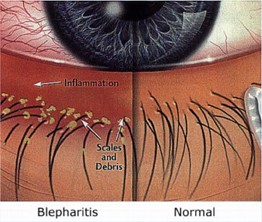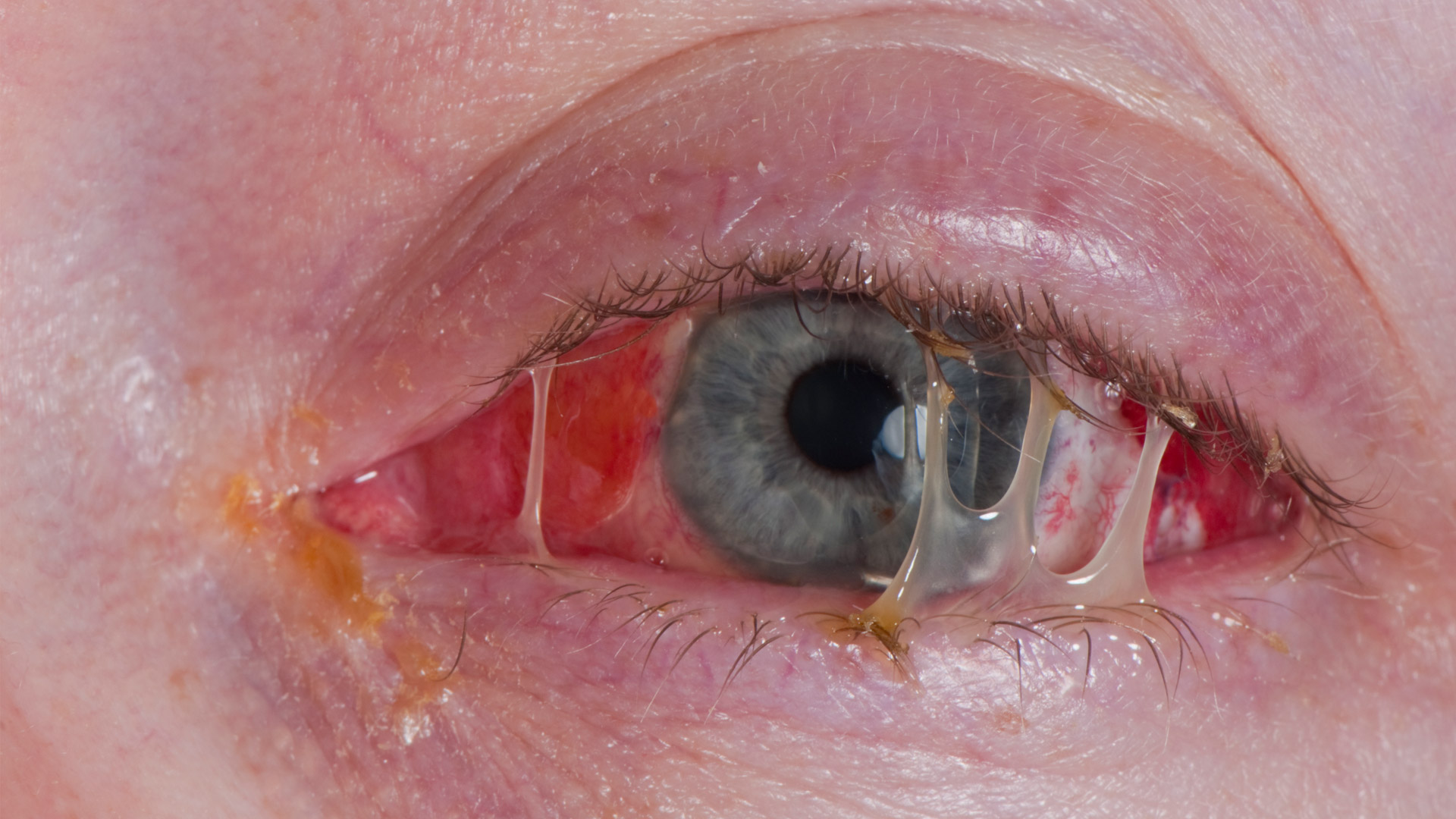Blepharitis/MGD refers to low-grade inflammation of the eyelids and obstruction of the oil glands of the eyelid (Meibomian Gland Dysfunction), often in association with dandruff-like scaling of the skin at the base of the eyelashes. This condition is a very common cause of chronic low- grade eye redness and discomfort. Blepharitis/MGD can lead to a variety of symptoms and can contribute to dryness of the eyes.
 Why does it occur?
Why does it occur?
Most conditions are secondary to your body’s chemistry and consistency of the oils that your body produces. People that have dandruff or oily skin are more likely to have blepharitis. Blepharitis is also extremely common in patients that have a skin condition called rosacea, which in an inflammatory skin condition that causes the oil glands of the skin of the face, nose, and eyelids (ocular rosacea) to get clogged. Bacterial infection, commonly with staphylococci, or louse infection can lead to blepharitis.
Symptoms include:
- Irritation, itching, or burning of the skin at the edge of the eyelid
- Crusty deposits on the edge of the eyelid that flake off
- Red eyelid edges
- Matted eyelashes, especially in the morning
- Lashes that fall out
- Dry, gritty eyes
- Tender eyelids
- Watery eye
Blepharitis/MGD cannot be cured. However, most cases can be controlled with good hygiene, consisting of the frequent use of hot compresses (in every case) and meticulous cleaning of the eyelid scales (when present). In addition, the use of supplemental tear drops and nutritional supplementation with fish oils can further improve the symptoms associated with this disorder. Hot compresses should be applied, with mild pressure and massage, to the upper and lower eyelids of both eyes for at least one or two minutes. A clean washcloth can be used for this purpose. A convenient time to do this treatment is while showering.
The eyelashes can be cleaned with a self-made dilute solution of water and Johnson’s baby shampoo. Alternatively, there are a number of excellent lid hygiene products on the market that make it very easy to maintain very clean eyelids.
The addition of fish oils (omega-3 fatty acids) in the diet or via supplements can be effective in improving the quality of the oil glands in the eyelids. In resistant cases it is sometimes necessary to use medication eye drops and oral antibiotics to control blepharitis. The use of these therapies should be prescribed and closely monitored by your ophthalmologist.
EPS has recently adopted a new, breakthrough system for assessing and treating Blepharitis/MGD. Our new system consists of:
- LipiView™ II Ocular Surface Interferometer – Captures detailed images of the glands and tear film
- Meibomian Gland Evaluator – Evaluates Meibomian gland function
- LipiFlow™ Thermal Pulsation System – Treats blocked meibomian glands (cause of most dry eyes)
Unlike traditional dry eye treatments (warm compresses, wetting drops, ointments) that address symptoms, LipiFlow treats the root cause, the obstructed Meibomian glands. Our goal is to unblock the glands in order to allow them to resume their natural production of lipids required for a healthy tear film. LipiFlow is a 12-minute, in-office procedure. Both eyes can be treated simultaneously.
LIPIFLOW
2. LipiFlow Patient Animation
3. Restasis TV Ad What You Don’t See


